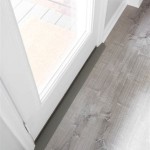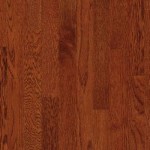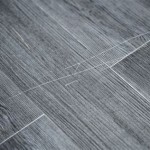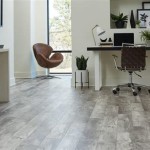Victorian Style Vinyl Flooring: A Practical Elegance for the Bathroom
The Victorian era, spanning from 1837 to 1901, was a period characterized by opulence, intricate designs, and a romantic sensibility. Applied to interior design, Victorian style evokes a sense of grandeur, comfort, and nostalgia. Bathrooms, often places of simple utility in previous eras, became increasingly sophisticated spaces within the Victorian home. While original Victorian bathrooms featured materials like marble, ceramic tile, and wood, modern homeowners can achieve a similar aesthetic with the practical benefits of vinyl flooring.
Vinyl flooring has evolved significantly from its early iterations. Today’s vinyl offers a remarkable ability to mimic the appearance of various materials, including stone, wood, and intricate tile patterns. This versatility makes it an excellent choice for recreating a Victorian bathroom design while offering superior water resistance, durability, and ease of maintenance – qualities crucial for the demanding environment of a bathroom.
This article will explore how vinyl flooring can be effectively utilized to create a Victorian-inspired bathroom. It will delve into suitable patterns, colors, and considerations for incorporating vinyl flooring into a cohesive and authentic Victorian bathroom design. The focus will be on the practical advantages of vinyl in this specific application, highlighting its suitability for the modern homeowner seeking a classic aesthetic.
Key Considerations for Choosing Victorian Style Vinyl Flooring
Several factors must be considered when selecting vinyl flooring to capture the essence of Victorian style in a bathroom. These include pattern, color palette, texture, and overall integration with the existing bathroom fixtures and décor. Attention to these details will ensure a cohesive and convincing Victorian aesthetic.
Pattern Selection: Victorian design is characterized by intricate patterns and detailed motifs. When choosing vinyl flooring, consider patterns that emulate traditional Victorian tiles. These include geometric designs, such as octagons with dot inserts, checkerboard patterns, and elaborate floral or scrollwork motifs. Many vinyl flooring options are available in sheets, planks, or tiles, allowing for customization and flexibility in design. Sheet vinyl offers a seamless surface, ideal for minimizing water penetration, while vinyl tiles allow for more intricate patterns and easier replacement of damaged sections.
Repeating patterns are a hallmark of Victorian design. Consider using a border pattern to frame the main flooring area, further enhancing the visual complexity and sophistication. The border could feature a contrasting color or a more elaborate design than the central field. Some manufacturers offer pre-designed vinyl borders that complement their main flooring patterns, simplifying the design process.
Avoid overly modern or minimalist patterns, as these will detract from the desired Victorian aesthetic. Focus on patterns that feature symmetry, repetition, and intricate details. Research authentic Victorian tile designs for inspiration and guidance.
Color Palette: The Victorian era favoured rich, saturated colors, often combined in dramatic contrasts. Common colors included deep reds, blues, greens, browns, and creams. When selecting vinyl flooring, consider a color palette that reflects these preferences. A classic combination is a black and white checkerboard pattern, which provides a timeless and elegant Victorian look. Alternatively, consider using deep green or blue vinyl flooring with a contrasting cream or beige border.
Muted tones can also be effective in creating a Victorian feel, especially in smaller bathrooms where brighter colors might feel overwhelming. Soft greys, beiges, and creams can create a sense of spaciousness and elegance. These muted tones can be paired with darker accents in the fixtures and accessories to provide visual interest and depth.
Consider the color of the walls and other bathroom fixtures when choosing the vinyl flooring color. The flooring should complement the overall color scheme and create a harmonious and balanced aesthetic. Avoid clashing colors or overly bright, modern shades that will detract from the Victorian ambiance.
Texture and Finish: While vinyl flooring is typically smooth, some options offer embossed textures that mimic the feel of ceramic tile or stone. This can add to the realism and authenticity of the Victorian look. Look for vinyl flooring with a slight texture to enhance its visual appeal and provide a more slip-resistant surface, which is particularly important in a bathroom environment.
The finish of the vinyl flooring is also important. A matte or satin finish is generally preferable to a high-gloss finish, as it will better replicate the look of traditional Victorian materials. A high-gloss finish can appear too modern and detract from the desired aesthetic. A matte finish will also help to conceal scratches and scuffs, ensuring that the flooring maintains its appearance over time.
In addition to the surface texture, consider the edge profile of the vinyl tiles or planks. Beveled edges can add depth and definition to the flooring, creating a more realistic look. Square edges, on the other hand, provide a cleaner, more modern appearance.
Advantages of Vinyl Flooring in a Victorian Bathroom
Beyond its aesthetic versatility, vinyl flooring offers several practical advantages that make it an ideal choice for the modern bathroom. These include water resistance, durability, ease of maintenance, and cost-effectiveness.
Water Resistance: One of the primary benefits of vinyl flooring is its exceptional water resistance. Bathrooms are inherently damp environments, making water resistance a crucial factor in flooring selection. Vinyl flooring is inherently waterproof, preventing water from seeping into the subfloor and causing damage. This is particularly important in areas prone to splashing, such as around the bathtub, shower, and sink.
Unlike natural wood or some types of tile, vinyl flooring will not warp, crack, or stain when exposed to moisture. This makes it a low-maintenance and durable option for the bathroom. Sheet vinyl, in particular, offers a seamless surface that minimizes the risk of water penetration. However, even vinyl tiles and planks are designed with tight seams to prevent water damage.
Proper installation is essential to ensure the water resistance of vinyl flooring. The subfloor must be clean, level, and dry before installation. Seams should be properly sealed to prevent water from seeping underneath the flooring. With proper installation, vinyl flooring can provide years of trouble-free performance in a bathroom environment.
Durability: Vinyl flooring is known for its durability and resistance to wear and tear. It can withstand heavy foot traffic, spills, and impacts without showing signs of damage. This makes it an excellent choice for a busy bathroom that is frequently used by multiple family members.
Most vinyl flooring is protected by a wear layer, which is a clear coating that resists scratches, scuffs, and stains. The thickness of the wear layer determines the flooring's durability. For bathrooms, it is recommended to choose vinyl flooring with a thick wear layer to ensure long-lasting performance.
Vinyl flooring is also resistant to fading from sunlight, making it a good choice for bathrooms with large windows. It is easy to clean and maintain, requiring only regular sweeping and mopping. Unlike some other flooring options, vinyl flooring does not require special cleaning products or treatments.
Ease of Maintenance: Maintaining vinyl flooring in a bathroom is relatively simple and straightforward. Regular sweeping or vacuuming will remove dirt and debris, preventing them from scratching the surface. Mopping with a mild detergent and water is usually sufficient to clean the flooring and remove any stains or spills.
Avoid using harsh chemicals or abrasive cleaners on vinyl flooring, as these can damage the surface. A pH-neutral cleaner is recommended for regular cleaning. For stubborn stains, a mild bleach solution can be used sparingly, but it is important to rinse the area thoroughly afterward.
Vinyl flooring does not require waxing or polishing, further simplifying maintenance. With regular cleaning and proper care, vinyl flooring can maintain its appearance for many years. This makes it a practical and convenient choice for homeowners who want a low-maintenance bathroom flooring option.
Cost-Effectiveness: Compared to other flooring options, such as natural stone or ceramic tile, vinyl flooring is relatively cost-effective. It is less expensive to purchase and install, making it a budget-friendly choice for homeowners who want to create a Victorian-inspired bathroom without breaking the bank.
The cost of vinyl flooring can vary depending on the quality, thickness, and pattern. However, even high-quality vinyl flooring is typically less expensive than natural stone or ceramic tile. Installation costs are also generally lower, as vinyl flooring is easier to install than other types of flooring.
In addition to its affordability, vinyl flooring offers long-term cost savings due to its durability and low maintenance requirements. It does not require special cleaning products or treatments, reducing ongoing maintenance costs. Its water resistance also helps to prevent water damage, which can be costly to repair.
Integrating Vinyl Flooring with Other Victorian Bathroom Elements
To create a truly authentic Victorian bathroom, it is essential to integrate the vinyl flooring with other key elements of the design. These include fixtures, accessories, wall treatments, and lighting. A cohesive and well-planned design will create a captivating and immersive Victorian experience.
Fixtures: Choose bathroom fixtures that are consistent with the Victorian style. Clawfoot bathtubs, pedestal sinks, and high-tank toilets are classic Victorian fixtures that will enhance the authenticity of the design. These fixtures are often available in porcelain or cast iron, with decorative details such as ornate faucets and claw feet.
The finish of the fixtures should also be considered. Polished chrome, brushed nickel, and oil-rubbed bronze are all appropriate choices for a Victorian bathroom. Avoid modern finishes such as stainless steel or matte black, as these will detract from the overall aesthetic.
Consider adding a vintage-style shower enclosure with a shower curtain or a glass enclosure with a brass frame. A traditional towel rack and toilet paper holder will also contribute to the Victorian feel.
Accessories: Small details can make a big difference in creating a Victorian bathroom. Add accessories that are consistent with the era, such as antique mirrors, porcelain soap dishes, and decorative perfume bottles. Frame prints of Victorian-era illustrations or photographs can also add to the ambiance.
Use decorative towels with embroidered details or lace trim. Place potted plants or flowers in decorative containers to add a touch of nature to the bathroom. A vintage-style rug or bath mat can also enhance the comfort and appearance of the space.
Avoid using overly modern or minimalist accessories, as these will clash with the Victorian aesthetic. Focus on accessories that evoke a sense of history and elegance.
Wall Treatments: The walls of a Victorian bathroom offer another opportunity to enhance the overall design. Consider using wallpaper with a floral or damask pattern. Alternatively, you can use paint in a rich, saturated color, such as deep red, blue, or green. Wainscoting or beadboard can also add a touch of Victorian charm to the walls.
Avoid using plain white paint or overly modern wall treatments, as these will detract from the desired aesthetic. Focus on wall treatments that are rich in texture and detail.
Consider adding a chair rail or picture rail to further enhance the Victorian feel. These architectural details can add depth and dimension to the walls.
Lighting: Lighting is an important element of any bathroom design, and it is particularly important in a Victorian bathroom. Choose lighting fixtures that are consistent with the era, such as sconces with fabric shades or a chandelier with crystal accents. These fixtures can provide both ambient and task lighting.
Avoid using harsh fluorescent lighting, as this will create an unflattering and uninviting atmosphere. Focus on warm, soft lighting that is reminiscent of candlelight.
Consider adding a dimmer switch to the lighting fixtures to create a more flexible and customizable lighting scheme. This will allow you to adjust the lighting to suit your needs and create a relaxing and inviting atmosphere.

Victorian Vinyl Flooring Traditional Designs Meet Modern Style For The Floor More

Victorian Sheet Vinyl Flooring Cushioned For A Softer Feel

Victorian Style Vinyl Flooring Order Free Samples Tapi

Northmore Sable Black Harvey Maria

Victorian Vinyl Flooring Traditional Designs Meet Modern Style For The Floor More

Blue Green Victorian Tile Style Comet Vinyl Flooring More For Your Floor

Karndean Heritage Collection Flooring Best At

Victorian Vinyl Flooring Traditional Designs Meet Modern Style For The Floor More

Victorian Lvt Flooring Bathroom Hallway Tiles Harvey Maria

Edwardian Star Mustard Sheet Vinyl Flooring Top Quality Great Value
Related Posts








